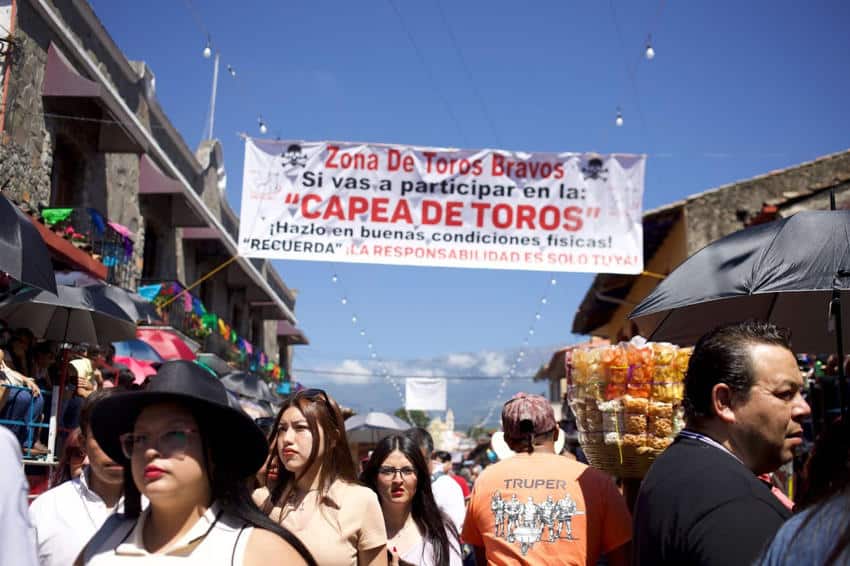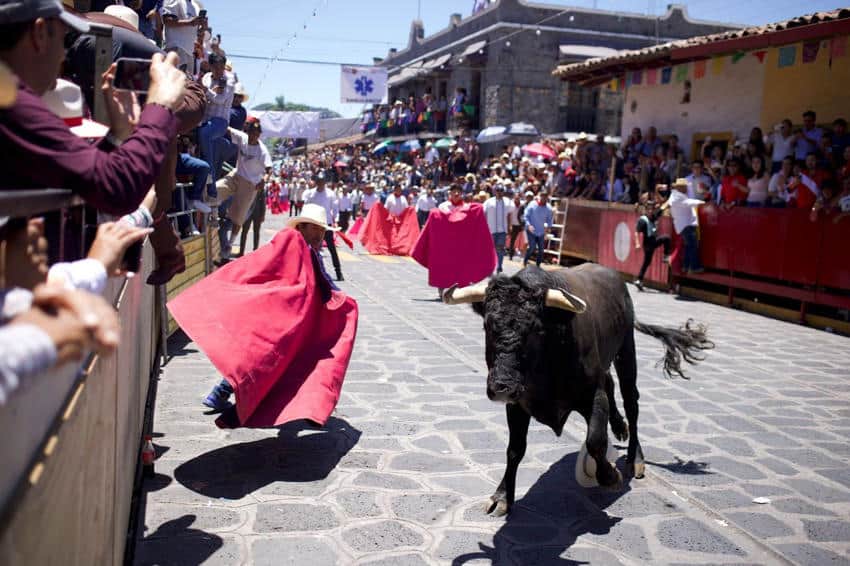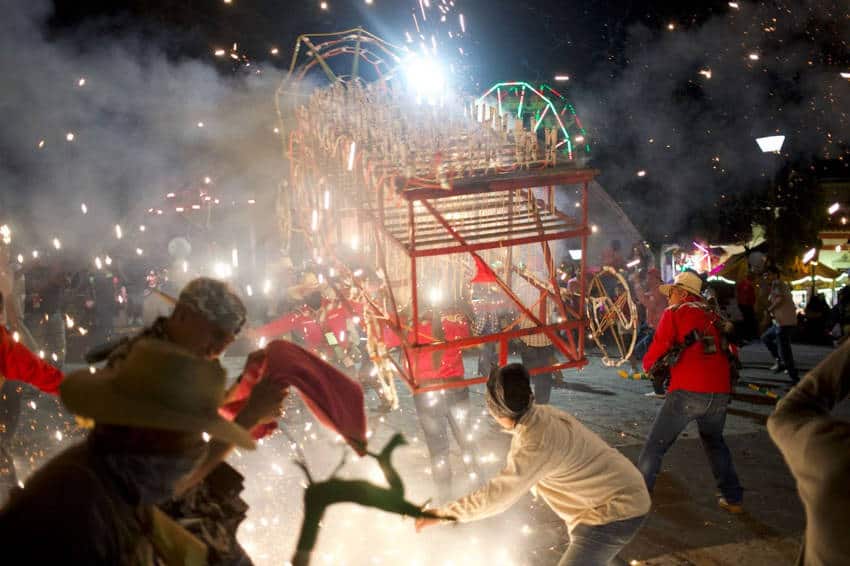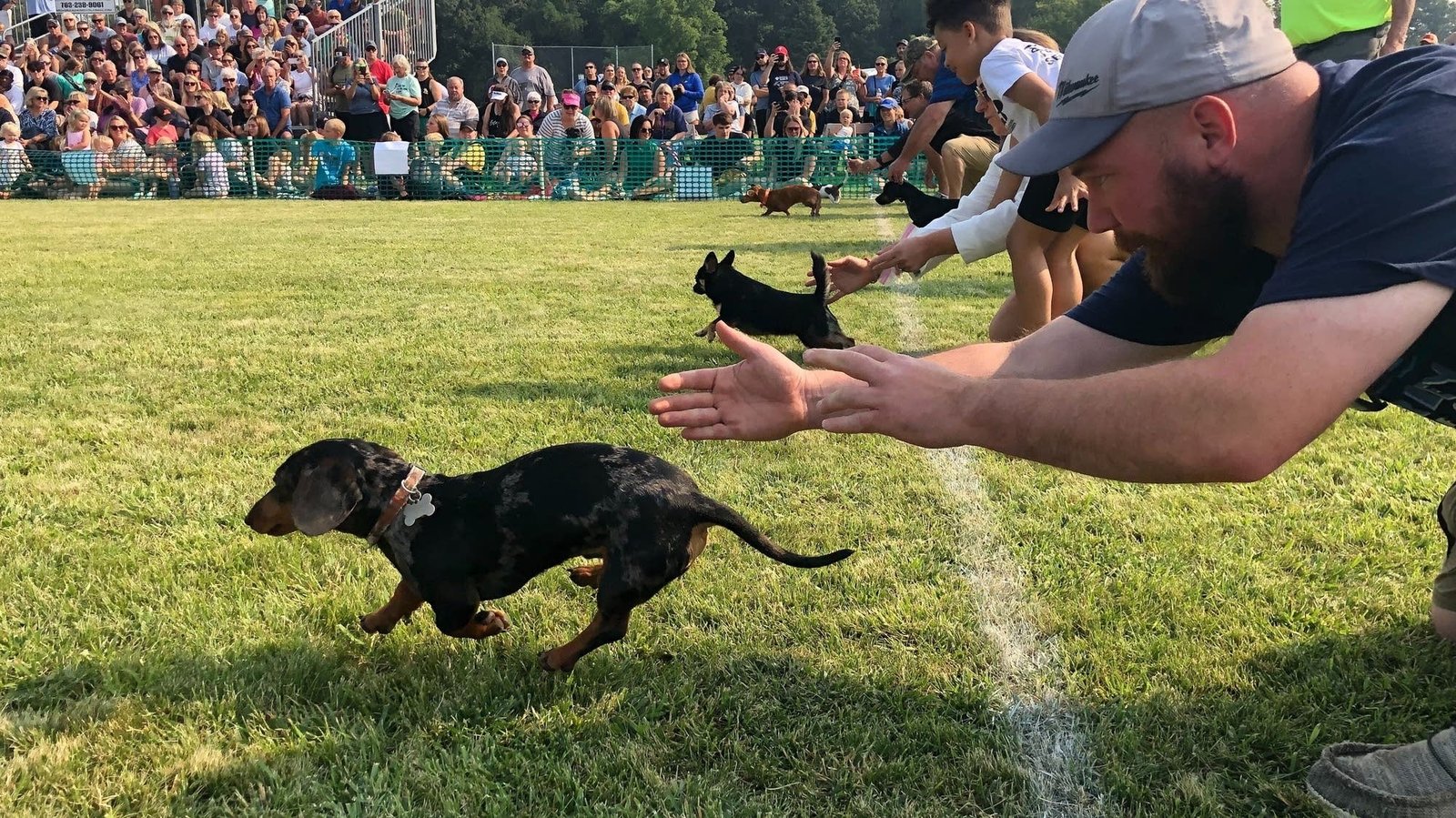About a half hour away from Xalapa’s urban center, tucked into the lush, rolling hillsides, awaits one of Mexico’s quaintest Pueblo Mágicos: Xico.
Replete with its gastronomic offerings, waterfall hikes and abundance of history, it’s beloved year-round — with moderate weather and unbeatable views of Cofre de Perote, the eighth tallest summit in the country.

Surrounded by rivers and banana trees, Xico is a majestic locale unto itself, known for its distinct mole xiqueño (a particularly sweet variation of the Mexican sauce), tamales canarios (a dessert tamal made from rice flour and milk) and the nearby Texolo Falls, (a popular site where Hollywood scenes have often been filmed).
Xico is a place I’ve often visited growing up, where my family would frequently take day trips to explore. And, yet, while only being a short drive away from my parents’ hometown in Xalapa, I’ve never once attended the Xiqueñada — an annual celebration in honor of Saint Mary Magdalena — which draws thousands of visitors to the small town every July, particularly for its amateur bull capea, an event where amateurs can dodge and otherwise interact with young bulls in a controlled environment.
For the 50th anniversary of the event, I finally made it to Xico for the raucous weeks-long tradition.
The celebration for Santa María Magdalena is one of the oldest in the state, believed to have originated in 1853. The Xiqueñada, which involves a street capea in the morning and bullfight in the evening, dates back to 1975.
During this multiweek festival, altars are built inside of homes with traditional offerings and music. Of course, regional favorites like mora (fermented berry wine) and pan de huevo (egg-brushed, sweet bread rolls) are hawked on every corner and from every window.
The Mardi Gras-esque party lasts for many days and occurs throughout the pueblo’s historic, narrow roads, elaborately interconnected with parades, outdoor drinking, carnival rides, street food, floral adornments, music, family activities and most famously, bulls loosed upon the main avenue. Over the years, more humanitarian precautions have been enacted to protect the bulls from harm, but it still remains a controversial aspect of the festival.

The party rages from day until night, with most of the action centered near Parque Xico, in front of the Church of Santa María Magdalena. You’ll get your share of steps while traversing the small town’s restaurants, taquerias, artisan shops and local squares, which are all mostly clustered along Hidalgo, the main strip.
It all ends with a local version of bullfighting, a tradition brought over by the Spaniards in the 16th century. In total, 18 bulls are transported into the town’s center inside small shipping containers. The main street that leads in and out of town is sectioned off with steel gates into three multiblock stretches lined with spectators, who watch from makeshift bleachers built the day before. In order to sit, you must pay a fee to the restaurant or small business you are seated in front of, which will likely offer drinks, snacks and, in some cases, entire meals for an extra charge.
For those opposed to the bull event, the celebrations are so much more than that; the majority of days leading up to it are filled with arts of a bohemian, communal nature and are especially family-friendly to attend.
The festival happens in phases, with most events largely centered on decorative costumes, on La Xiqueña — a local mythical figure who is revered — and on St. Mary Magdelene, whose statue is carried around town. Daily processions with live bands and colorful outfits — featuring a mixture of both Indigenous and Spanish influences — sweep the streets, though beware: Road closures make for difficult mobility, so plan to park your vehicle well in advance or take public transportation from a larger city.
One particular highlight is the series of “tapetes” — kilometers-long works of art formed with naturally dyed sawdust arranged in intricate shapes and floral patterns to resemble carpets on the principal streets.
Community members such as Manuel Olivares, a local resident who has been involved with creating designs for over 25 years — since he was a child — spend hours arranging it all as out-of-towners and locals walk along the edges to view the process and end product.
During the nonstop parades, hundreds of children and adults from the town’s various neighborhoods and surrounding areas wear cowbells to help guide the men wearing large bull-shaped contraptions named “toritos” (or “little bulls”), which consist of around 160 fireworks. These get lit in the evenings in a show of flying sparks and dancing street parties. The cowbells, in particular, are said to ward off negative spirits and represent the provincial pride of the people, who in many cases maintain a family lineage of participation.
On the penultimate day, which is when the bulls arrive, I chose to experience it all from inside El Mesón Xiqueño, a spacious restaurant on Hidalgo street, which has been hosting La Xiquenada events for more than 30 years. I went with my family and the environment was, from a consumer perspective, enjoyable and comfortable for us all.
To understand the event, it’s important to note that it’s one of the town’s most attended — and economically profitable — days for local foodmakers, business owners and artisans. When I was a child, my mom — a Xalapeña herself — would often attend the event and come back with various memorabilia. In that sense, the event has a certain lore for the people in this sector of Veracruz.

All that doesn’t dismiss the concerns over animal rights violations; it’s simply to say that in this part of the state, it’s a way of life for many, an entire economy unto itself and a rite of passage for certain participants.
Inside the restaurant, you don’t see much. From a nearby speaker out front, a lively emcee narrates as men from the town dodge the bulls. These men mostly consist of a group that takes it seriously, although there are, of course, others who are more reckless in their approach.
No weapons, objects or harassment of the bulls are allowed — at one point, a young man threw his empty beer can at a bull and was vigorously booed by the crowd and ejected. Throughout this three-hour event, which begins around noon, more and more locals jump into the fray, some wearing bull horns and waving large red cloths to distract the bulls in order to dodge head-on charges.
It’s surreal to witness, as crowds cheer for the pueblo’s best “torreros” who dance and twirl their way out of danger; nearby, professional bull wranglers watch on in case of any serious injuries. I saw a few men get trampled, and one needed to be carted off but appeared to be fine.
At times, the bulls appeared unconcerned, if not uninterested, while at others, they forcefully bulldozed their way down the cobblestoned paths. Eventually, they are returned to the gated storage from which they emerged, and the streets are reopened for the festival to resume.
Later in the evening, the event officially concludes with bullfighters from various around the world. Although Mexico City recently banned bullfighting (instead opting for bloodless bullfighting rules), the sport still goes on in a few parts of Mexico, particularly in regions where it’s a proud, ongoing tradition. I chose not to attend this portion, which takes place at nearby Plaza de Toros Alberto Balderas.

Overall, the festival felt overwhelmingly local and inviting — a stranger offered to pour mora into my and my family member’s mouths from a horn-shaped flask simply for cheering him on while he was in mid pour himself. It felt largely family-oriented, with children and grandparents alike enjoying it all. I met a few artists, learned about local culinary traditions I’d never known, and appreciated the parochial energy of the Pueblo Mágico and its people.
One of Xico’s biggest charms is its Old World aura of a town founded in 1313 that has remained relatively stuck in time. Mexico is filled with such wonders — but rarely are they tucked away in the endlessly green mountains of Veracruz. Even rarer? That they have La Xiqueñada.
It is ethically complicated because of the bulls, but it is still worthwhile to witness these regional customs and see how people embrace their forms of entertainment and community differently than we might be accustomed elsewhere.
Xico is, indeed, magical — in more ways than one.
Alan Chazaro is the author of “This Is Not a Frank Ocean Cover Album,” “Piñata Theory” and “Notes From the Eastern Span of the Bay Bridge” (Ghost City Press, 2021). He is a graduate of June Jordan’s Poetry for the People program at UC Berkeley and a former Lawrence Ferlinghetti Fellow at the University of San Francisco. His writing can be found in GQ, NPR, The Guardian, L.A. Times and more. Originally from the San Francisco Bay Area, he is currently based in Veracruz.




